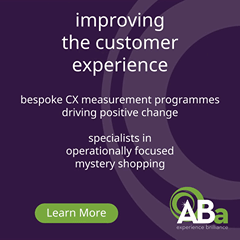Technology for retail stores: How to avoid tool overload
Choice isn’t always a good thing. When it comes to getting the best outcomes from using tasks management tools in store, consolidate and streamline is the best approach, says Fabrice Haiat, CEO and co-founder of YOOBIC
Before 2020, many retailers were digitising the store by giving store staff electronic devices to make tasks easier and quicker to execute and more rewarding for staff to execute, all in the pursuit of a better experience for customers. The pandemic accelerated this journey to the extent that consumer apps such as WhatsApp, once banned in the workplace, became commonplace for communications between staff and even customers for things like click-and-collect notifications.
Multiple new tools and apps were introduced with the best of intentions, in order to manage the unique circumstances of the pandemic, but the result has been a plethora of solutions that have created fatigue among employees having to juggle between them, and in some cases new areas of inefficiency and a lack of transparency.
As staff jump from one tool to another to search for information, they could be using that extra wasted time with customers, something more rewarding for both parties. An American study from Cornell University found that switching devices eats up nearly an hour every, and also leads to mistakes because staff can’t keep track of what’s going on across all the different tools being used.
Multiple tools also means training, and therefore onboarding, take longer for both new and existing staff. Moreover, IT costs are higher in terms of device purchase and management, and software licensing costs. Overlapping features means that retailers are paying for features they don’t use, and create additional management headaches with no added value.
Getting the full picture of what is happening in stores becomes harder with multiple devices and systems and limits a retailer’s ability to be agile and strategise for the future.
Many staff simply responded to these pressures by falling back on the tools they were most comfortable with in their personal lives, such as WhatsApp or Facebook Messenger. This resulted in a potential loss of data security and the threat of hacking as communications then started to flow outside the company network, and multiple apps were accessed using the same passwords.
However, as our 2022 State of the Frontline Employee Experience survey shows, frontline teams request modern tools to support their work, but they also want an easy and seamless experience in a user-friendly environment, using apps that are similar to social media that they are familiar with.
Here are four key actions retailers can take to get control back of in store devices and tools.
1. Audit existing tools, processes and workflows
Every business has different needs, values, and ambitions and any tools used must be aligned with that vision. The needs of each organisation and set of users are different, so it is important to first document these, talking as well to employees to see what they want and need. Part of this will be finding out which tools they enjoy using, which features they think are the most helpful, and which features they don’t use.
Work with your technology partner to audit existing processes and tools to understand if this is correctly aligned with the business objectives, if it satisfies staff and if there are likely to be redundancies. After this audit, the partner will design an optimal organisation and IT architecture where some tools may have to be removed or integrated with the new platform.
2. Consolidate and streamline
The answer to maximising productivity is a system of engagement that integrates most useful features in a single platform. Choosing the right one from the many available involves starting with the basics :
- It should include a retail task management app so that frontline teams can work autonomously and with simplified task instructions, digitised checklists and real-time feedback.
- It should have a store communication tool to create a strong workplace community, which is important to frontline retail workers because it keeps everyone in the loop with top-down, bottom-up and peer-to-peer communication capabilities.
- It should hold a learning platform to embed learning into the organisational culture and make progression more achievable.
A single digital workplace platform centralises these capabilities and also enhances visibility through consolidated dashboards of sales, learning, operations, and communication data to give HQ real-time actionable insights.
3. Choose a tool designed specifically for frontline employees to ensure adoption:
Mobile-first is essential for frontline employees who are always on their feet and jumping from task to task. By connecting the frontline to HQ teams and to their peers helps organisations build a community and sense of belonging.
Microlearning capabilities make continuous learning and development possible for busy store teams without disrupting their flow of work. While task management software that boosts productivity, provides frontline support and creates a feedback loop enabling HQ to drive operational excellence across stores. Finally, look for an application that gives HQ real-time visibility into what’s happening in stores.
4. Integrate and centre the attention
Existing tools are often already heavily embedded in the structure of the organisation, so it may not be practical to replace every separate tool, so retailers need to work on integrating existing tools with the new all-in-one solution.
Choosing an all-in-one digital workplace tool with integration capabilities means that frontline retail teams have a frictionless journey as they have a one-stop shop for everything they need throughout their working day, without needing to switch between tools or log in multiple times. In this way, retailers have the right tools to deliver the employee experience that store employees crave and the experience customers expect.














